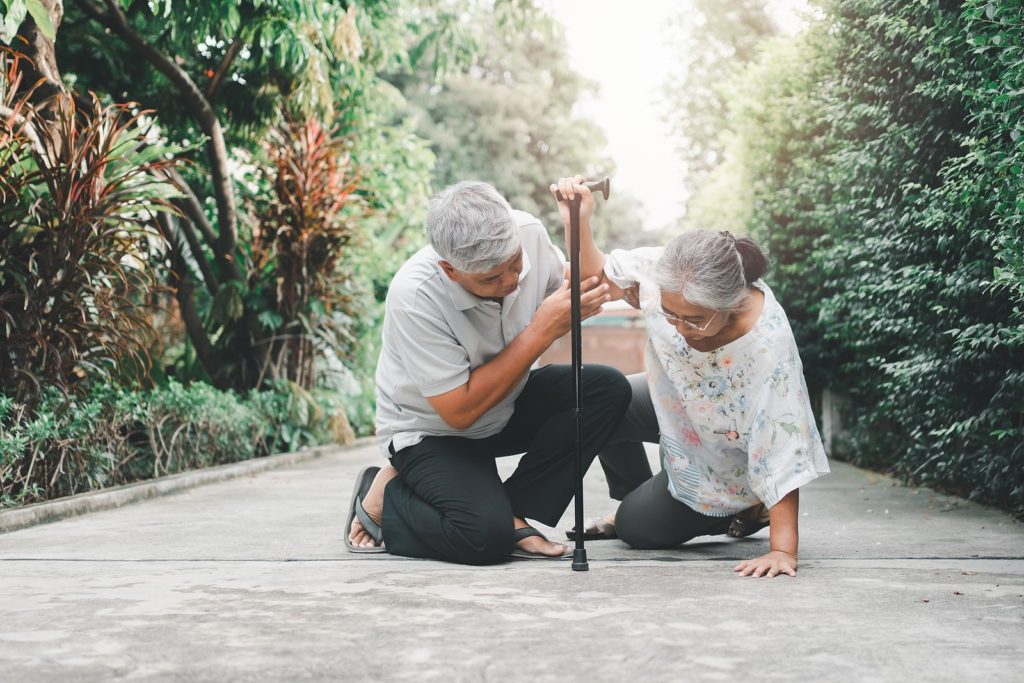Every year, 800,000 strokes happen in the United States.1 While no one ever plans on having a stroke, they happen for a variety of reasons. Older adults are among the most vulnerable, with nearly three-quarters of all strokes occurring in people 65 years and older. As a continuing care retirement community (CCRC) with a Life Care option — also known as a Life Care community — at Ventana by Buckner, we realize that the members who call our community home are among the most vulnerable. When it comes to strokes, it’s important to be knowledgeable and prepared. If you’re a senior or loved one of a senior who’s considering a move to a Life Care community, or if you’re a current member of Ventana, we want you to know what our health services can do for you in the event of a stroke and throughout recovery. Keep reading as we highlight the common warning signs of strokes, detail stroke recovery stages and time, and discuss stroke care and recovery found at Ventana’s Life Care community.
Your Loved One Had a Stroke. Now What?
While the actual stroke itself can impact your loved one almost immediately, managing their recovery after the stroke can take months to accomplish. Whereas illnesses like heart disease and cancer can take years to fully develop, experiencing a stroke typically has a sudden and dramatic impact on your loved one’s life. It’s akin to turning off a light switch during the early days of stroke recovery. For example, your loved one may lose their ability to speak or walk and may even encounter issues with their memory, making it hard to recollect those closest to them. It can feel as if the person you knew is no longer there, but in reality, this is when your loved one will need your support the most.2 This is why having the highest-quality clinical care for your loved one throughout the recovery process can make all the difference in successful stroke rehabilitation.
Common Warning Signs of a Stroke
Strokes occur when the flow of blood to the brain is blocked. Warning signs of a stroke include:
- Weakness in the face (like a lopsided smile), arm or leg
- Speech difficulty
- Face drooping
- Impaired or lost vision
- Lack of coordination
- Trouble walking
- Sudden severe headache
Strokes are medical emergencies, and it’s vital to get an individual showing any of these symptoms to a hospital as soon as possible. Getting medical treatment sooner rather than later can make a difference in how much lasting damage is caused by the stroke. When living at a CCRC/Life Care community, like Ventana, medical support is swift — no matter where you are in the community.
Stroke Recovery Stages
Once an individual experiences a stroke, they’ll go through seven stages of stroke recovery. These include:
- Stage One (Acute Care)
The actual process of recovery begins as soon as an individual has been treated for any critical symptoms. Doctors take preventive measures to avoid further strokes and rehab often starts at this stage. Individuals are usually encouraged to sit up, move around and, if possible, stand and walk around in this stage.
- Stage Two (Spontaneous Recovery)
If an individual experiences a minor stroke, they may be discharged from the hospital within a week after they begin to show signs of recovery. If they experienced a major stroke, it may take longer to leave intensive care due to severe side effects. At this point, an individual has the option to be transferred to a Life Care community to receive the care and support they need while they heal from the stroke.
- Stage Three (Rehabilitation)
During the first two to three months of recovery, an individual will undergo intensive rehabilitative therapy to help regain lost abilities. Their brain is similar to a new brain for the first three months after a stroke, meaning it’s ready to learn and make new connections. This ability for the brain to adjust is known as neuroplasticity and it plays a vital role in an individual’s recovery. After the process of neuroplasticity begins, an individual can start working on regaining additional physical improvements with the help of skilled healthcare professionals guiding them along the way.
- Stage Four (Long Term Adjustment)
Once an individual has completed their intensive rehab program, they’ll be advised to continue rehabilitation at home. At a Life Care community, the on-site rehabilitation staff can provide guidance on appropriate exercises and lifestyle choices, designed to improve quality of life while minimizing post-stroke symptoms and reducing the risk of another stroke.3
Stroke Recovery Time
At Ventana, we’re often asked what the process and timeline of stroke recovery looks like for members who’ve experienced a stroke. While there’s no simple answer to this question, it’s essential to understand that an individual’s stroke recovery timeline depends on a variety of different factors, including the size and location of the stroke and their overall health prior to the stroke.
- Generally speaking, a faster recovery is typically associated with minor strokes, longer recovery often accompanies strokes that impact larger areas of the brain.
- On average, the recovery period for most strokes is five to six weeks, depending on the severity of the stroke.
An individual’s rehabilitation plan may involve a range of therapeutic interventions, including physical therapy, speech therapy and occupational therapy to help them achieve total body recovery. They’ll engage in physical activities focused on regaining balance, improving coordination, and increasing range of motion to help restore everyday physical functions like standing, walking and changing positions.4
Stroke Recovery at a Life Care Community
A Life Care community is a retirement community that provides a continuum of care, which ensures seniors can receive the care they need as they age. It provides its members with the highest quality of independent living and an amenity-rich lifestyle, including access to on-site higher-level care if the member’s medical needs require such care. This continuum of care ensures that seniors will have the stability of remaining in the place they call home while being offered an array of health services — including rehabilitation, skilled nursing, long-term care and more, all within the same community — throughout their stroke recovery.
Stroke Recovery at Ventana by Buckner
For our members, our clinical staff is trained to perform proper stroke assessments, which includes detection of stroke signs and symptoms. You can be confident that our medical and treatment team is ready and prepared to provide the highest level of care if you ever experience a stroke or other medical emergency. If your loved one has experienced a stroke and you’re now navigating stroke recovery, it’s important to know that the compassionate and highly skilled treatment team at Ventana is here to help them along their road to recovery. Your family doesn’t need to go through this alone, so reach out to discuss the clinical options your loved one has to help them navigate the aftereffects of a stroke.
Resources:
1 National Center for Biotechnology Information. CDC Grand Rounds: Public Health Strategies to Prevent and Treat Strokes. Accessed October 15, 2021. https://www.ncbi.nlm.nih.gov/pmc/articles/PMC5657990/#:~:text=In%20the%20United%20States%2C%20nearly,stroke%20being%20considered%20largely%20preventable. 2 American Stroke Association. 15 Things Caregivers Should Know After a Loved One Has Had a Stroke. Accessed October 15, 2021. https://www.stroke.org/en/help-and-support/for-family-caregivers/15-things-caregivers-Should-know-after-a-loved-one-has-had-a-stroke. 3 SeniorAdvice. Assisted Living for Stroke Patients. Accessed October 15, 2021. https://www.senioradvice.com/articles/assisted-living-for-stroke-patients. 4 Mayo Clinic. Stroke rehabilitation: What to expect as you recover. Accessed October 15, 2021. https://www.mayoclinic.org/diseases-conditions/stroke/in-depth/stroke-rehabilitation/art-20045172.

